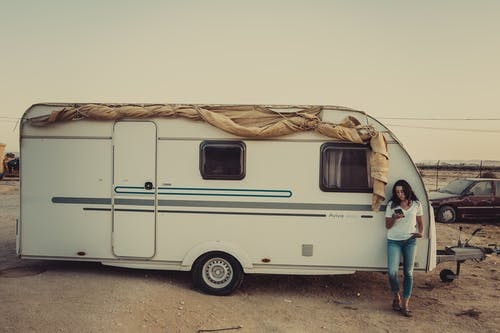In last month’s blog we talked about how to get your car’s tires ready for winter, and now it’s time to discover how to winterize your RV. The snow has already started to fall in Northern Nevada, and whether you’re planning some winter ski trips or storing away your RV for the winter, it’s important to take a few steps to make sure your RV is ready for the winter.
If you don’t winterize your RV, it can be especially prone to leaks, rotting and broken pipes during the winter months. While every RV is different in the specifics, we will cover some general guidelines for winterizing your RV.
Plumbing
One of the most important steps to winterization is making sure your plumbing is ready for the cold. This involves draining your pipes and adding RV antifreeze into the system to prevent leaks, breaks and frozen pipes.
- To start off, you’ll want to drain all the holding tanks in the RV, including the fresh water, gray water, and black water tanks.
- Flush the toilet, run the shower and open any other faucets in the RV to get rid of all the water in the system.
- Drain the water heater. Generally, you’ll want to remove the cover of the heater, pull the pressure release valve, and then drain the tank making sure it is completely depressurized.
- Then, go back and recap all the tanks, faucets and drains that you just emptied, and add non-toxic camper antifreeze, open all the faucets once again and make sure antifreeze comes out.
Remove and clean everything in the RV
This is a very important step that a lot of people tend to skip over. Many people just remove the food, but make sure to remove everything including personal items and hygiene products.
Food residue will attract mice and pests, so give your RV a nice wipe down including the kitchen, bathroom and living areas, and vacuum, if necessary. Mice and bugs will find a way into your RV, so remove everything from the fridge, freezer and pantry including canned goods and plastic containers.
After you clean the fridge and freezer, prop them open to allow air to circulate. You don’t want to hop into your RV in the Spring for your first camping trip to an awful odor.
Any stains or spills on the carpet or upholstery should be cleaned right away, so they don’t worsen over time, become ground in or attract unwanted pests.

Cover vents, openings and windows
Insects and pests like to nest in the furnace, bathroom and refrigerator so make sure to cover them adequately so you don’t come back to an RV full of mice! Check all the windows to ensure they are sealed properly and repair them, if necessary.
It’s also recommended to block the exhaust pipe with steel wool because that is another favorite nesting spot for pests.
Turn off electrical systems
You don’t need or want your electrical systems on all winter, so turn off the water pump, water heater, fridge and other electrical appliances. You may also want to just turn off the main circuit breaker completely.
Miscellaneous
The few steps mentioned earlier are vital to fully winterizing your RV, but we will mention a few more things for added protection.
- Protect your RV with a full body cover
- Cover your tires
- Park on a flat concrete area, NOT asphalt
- Make sure tires are properly inflated
- Keep the roof clear from snow throughout the winter
A1 Body Shop– RV repair
Hopefully this blog has given you a little insight into the best ways to winterize your RV. We also have a how to winterize your RV video that touches on a few different subjects.
Not only are we one of the top auto body shops in the Northern Nevada area, but we also have a sister company that specializes in everything RV—A1 RV Sales. Whether you need new parts or a repair job, our experts are equipped with the knowledge and expertise to get your RV working properly. Contact us today with any questions or general inquiries!